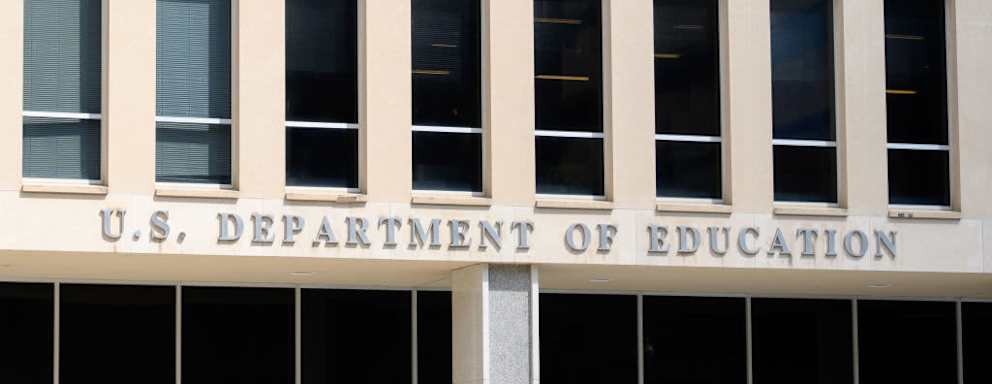Biden Defines Student Debt Forgiveness for Borrowers ‘Experiencing Hardship’
 Credit: Image Credit: Erin Scott / Bloomberg / Getty Images
Credit: Image Credit: Erin Scott / Bloomberg / Getty Images- The Department of Education over the last six months negotiated a student debt forgiveness plan for “borrowers experiencing hardship.”
- The plan would offer debt relief to borrowers with an 80% chance or higher to default on their loans soon.
- It also promises to create an application process for ongoing debt forgiveness.
- Higher education stakeholders agreed to greenlight the proposal despite some points of disagreement.
The Department of Education (ED) is close to finalizing President Joe Biden’s “Plan B” for widespread federal student loan debt forgiveness after agreeing on what constitutes “borrowers experiencing hardship.”
ED this week met with higher education stakeholders to discuss potential relief for this group of student loan borrowers. While there were disagreements on defining “hardship,” negotiators largely agreed that the department’s definition would provide debt relief to people most in need of debt forgiveness.
The measure passed a consensus vote, meaning all negotiators and the department were in favor of the proposal as is. Unanimous consensus also means ED should not make any substantial changes to the regulatory language before it puts forth a formal proposal for public comment later this year.
Notably, ED’s plan would provide automatic relief to borrowers determined to have at least an 80% chance of defaulting within the next two years of the regulations’ publication date.
ED will make this determination using a set of 17 defined factors outlined in the proposal:
- Household income
- Assets
- Types of loans and total debt balance
- Repayment status and payment history
- Student loan debt balance, relative to household income
- Total consumer debt balance relative to household income
- Pell Grant recipient history
- Sector and level of institution attended
- Student outcomes of the last college program attended
- Whether the student earned a degree or credential
- Age
- Disability status
- Age of the borrower’s loan
- Means-tested public benefit recipient history
- High-cost burdens unrelated to student debt, including healthcare and housing
- Extent to which “hardship” will persist
- Any other indicators, up to the department’s discretion
Lead ED negotiator Tamy Abernathy said the department would collect data related to the above categories from borrowers seeking relief. Then, ED would use formulas and a “machine learning model” to determine the likelihood that a given borrower would default on their debt within the next two years.
If that likelihood is 80% or more, the borrower qualifies for full or partial debt forgiveness.
The proposal includes Parent PLUS borrowers.
A handful of negotiators urged the department to lower this threshold to “more likely than not to default” within the next two years.
Abernathy, however, said ED was not willing to budge on this threshold.
“We think 80% is appropriate,” she said.
A borrower’s federal student loans enter default after nine months of continual missed payments. That means ED’s rule would only provide relief to borrowers the department believes have an 80% chance or more to miss nine months of payments.
In 2019, just before the COVID-19 pandemic payment pause, the three-year student loan default rate was 10.1%.
Many negotiators fought to include “loan servicing errors” among the factors ED would consider in its hardship calculus. However, Abernathy said that the department already has mechanisms to account for servicer errors to provide relief to borrowers, so adding that category is not necessary.
Despite these hangups, negotiators were overwhelmingly in favor of passing the department’s hardship regulations as is.
“All too often, there are branches of government that fail to help people when they truly need it, and I think that this is work that really has the potential to help a lot of people,” Richard Haase, a negotiator representing student loan borrowers who attended graduate programs, said.
Negotiators also applauded the department for agreeing not just to offer one-time debt forgiveness. ED promised to create an application process so that borrowers can continue to try to prove hardship for years to come.
ED previously met with negotiators in October, November, and December to flesh out other aspects of Biden’s “Plan B” debt forgiveness proposal. Negotiated rulemaking may provide more legal standing for widespread debt cancellation after the U.S. Supreme Court struck down the president’s initial debt forgiveness plan in mid-2023.
Negotiators failed to reach consensus on most other aspects of Biden’s proposal in December.
Still, Biden’s plan will include debt relief for the following categories of borrowers, in addition to those experiencing hardship:
- Borrowers who first entered repayment 25 years ago
- Borrowers whose current balance is more than the original amount they borrowed
- Borrowers who attended a career training program that led to unreasonably high debt or “unacceptably high” loan default rates
- Borrowers who would have qualified for forgiveness under another forgiveness program, like Public Service Loan Forgiveness (PSLF), or a repayment plan but never applied
ED will soon publish a draft proposal for public comment, and the public comment period will likely be open for 30 days. Clare McCann, a higher education fellow at the advocacy group and think tank Arnold Ventures, previously told BestColleges that it will likely take over five months from the date that negotiations are complete before ED is ready to finalize its rule.